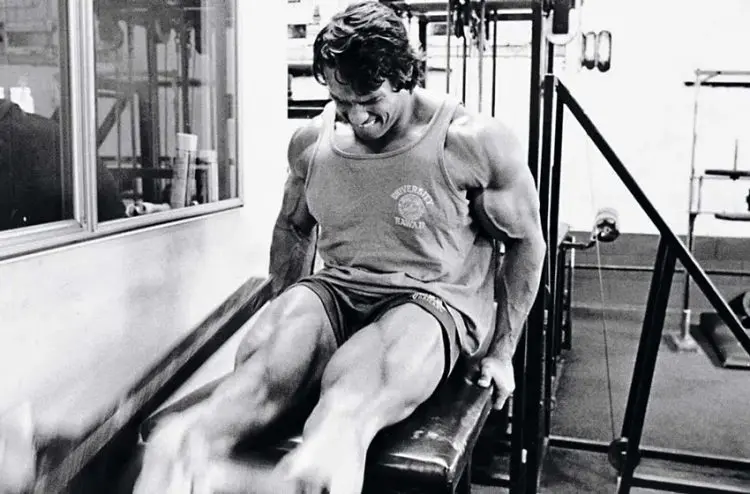Finding the time to train is an age-old challenge that seems to always be an issue. Add to that the extra pressure of trying to make your workouts effective in the little time you do have. It’s enough to have the pressure of everyday life always demanding more of your time.
From school and work to social obligations and scheduling anything else that likes to show up unannounced we’ve become a fly-by-the-seat-of-our-pants society.
Let’s finally get to brass tacks and tackle this problem. Our schedules won’t get any lighter, so it’s up to us to find a way to train with the time we have and make the best of it. Also, let’s use our time wisely and stop thinking that we can only maintain our current level of muscle and strength with short workouts.
Let’s shift gears and find out how to have some intense and effective workouts when pressed for time.
No Time?
Let’s first take a look at how things are and see if we can’t improve our schedules and set ourselves up for success.
Level Up Your Fitness: Join our 💪 strong community in Fitness Volt Newsletter. Get daily inspiration, expert-backed workouts, nutrition tips, the latest in strength sports, and the support you need to reach your goals. Subscribe for free!
When asked how they are doing, most people will robotically respond with the obligatory, “busy.” It’s become the new normal. It’s also a term of status. We want others to think we are constantly in demand, chaotic, and swamped. Is it a signal for pity or maybe sympathy? Whatever the case, we aren’t as busy as we believe.
There are pockets of free time, ways to become better organized, and the ability to combat the seduction of procrastination. We’ve sewed a complex, but comfortable web around our lives convinced that that’s just how things are. It’s all out of our control.
Don’t be fooled. The autopilot function of life can be turned off. Take Let’s take a look at how we can revamp our schedule, find more time, and take back control of our day.
Wasting Time?
The first, and most-likely the biggest time-waster, is technology in all of it’s forms. Social media, streaming TV, podcasts, texting, gaming, YouTube, and any other forms of distractions are probably most people’s Achilles heel. All of our devices, shows, and social feeds are designed to do just that, distract us from being productive. They do this so you’ll spend more time with their service, to sell more ads, and to make more money.
Start tracking how you’re spending your time. Take two or three days and see how much is spent on your phone, watching TV, etc. Track anything that isn’t productive. In other words work, school, and anything else of priority doesn’t count.
Next, look at how you’re spending your time with other important tasks. Does it take you forever to start something? Do you easily get distracted from a task? Is your attention span so short it feels almost impossible to focus for more than 10 minutes?
When taking on anything important (and this goes for your training as well) create a distraction-free environment and commit to the task at hand. This won’t be easy at first, but just like training your body, it gets easier with time. Start with 15 minutes of uninterrupted time blocks and increase it by five minutes each day. Soon you’ll find yourself much more efficient.
Can You Get A Great Workout In Less Time?
You may have done all of your homework above and still find just a shorter amount of time to train than you’d like. Don’t fret. There’s plenty of things we can do to still get in a great workout and make it effective.
Don’t think it’s possible? Consider Parkinson’s Law which states that “work expands so as to fill the time available for its completion” [1]. In other words, if you have a ton of time on your hands you will expand your task to fill in that allotted time. Conversely, if you have less time for a task, you will work to complete the task in the shortened amount of time.
If I were to tell you that you would receive $1000 if you completed a specific workout in 20 or 30 minutes, I’m willing to bet that you would do whatever it took to get through that workout. So, it comes down to how motivated you are, not how much time you have.
Let’s take a look at some easy-to-apply tips to make the best of the short amount of time you do have.
Targeted Warmups
Most lifters do one of two things. They either take too much time warming up with over-extended cardio and low load sets or skip the warmup phase of training altogether. Yes, we need a warm up period (which greatly depends on how you’re training), but when you’re pressed for time, you’ll need to take a targeted approach. Make each warm up set count.
If you normally do several minutes on a piece of cardio equipment, don’t just walk or saunter along. After one minute of low intensity, jack up the resistance or speed for two to three minutes to get the heart going and a sweat beading. Skip the 15 minute walk on the treadmill.
Additionally, taking forever to do several light sets of a specific exercise isn’t doing much. Again, take the warm up period seriously. Do a light set, rest 30 seconds or so and add weight for another lower rep warm up set. If you feel the need, increase the load again and repeat.
A bench press warm up could look something like this: 135 x 15, 155 x 6, 185 x 2.
Level Up Your Fitness: Join our 💪 strong community in Fitness Volt Newsletter. Get daily inspiration, expert-backed workouts, nutrition tips, the latest in strength sports, and the support you need to reach your goals. Subscribe for free!
Related: 10 Warm-Up Exercises For Enhancing Deadlift Performance
Supersets, Compound Sets, Circuits
These techniques are no-brainers, but it’s amazing how few lifters use them. At first supersetting, compound setting, and performing circuits may seem counterproductive. You may feel like you can’t give each set your all as with straight sets, but rest assured, after a few sessions your strength will shoot up and you’ll instantly increase your intensity all the while saving precious time.
Go with a chest/back, biceps/triceps, quads/hams superset. After each superset, rest for one minute and then repeat. For compound sets do two exercises for the same body part back-to-back. After each compound set, rest for one minute.
For circuits, simply rest for one minute after each circuit.
Less Rest
If you’re still on the straight set bandwagon and refuse to superset or you have little-to-no room for supersets or circuits in your crowded gym simply take less rest between sets.
Muscle hypertrophy (gains in muscle size) happens when more muscle fibers are recruited and fatigued. Yes, strength does play a role too, but if you’ve been on the strength train for a while and need a little kick in the butt, try resting less.
Go for 60 seconds for larger muscle groups such as legs, chest, and back, and 30 to 45 seconds for smaller areas like arms, shoulders, and calves. At first you may feel spent, but give it a few weeks and watch your shirt sleeves fill out more.
Choose Wisely
Try to avoid filling your program with an endless supply of isolation exercises. Yes, isolation movements are beneficial, but you’re pressed for time, remember? You’ll need the biggest and best bang for your buck. That means choosing the big, compound, multi joint exercises we all know and love. Bench presses, shoulder presses, squats, deadlifts, pull ups, rows, and dips.
Those will provide you with the most muscle stimulation in less time. If you have time to throw in an isolation exercise or two go for it. The fact is, most lifters waste time with fluff exercises anyways, so this could be a nice shift for more gains in strength and mass.
Focus And Intensity, Less Distractions, Watch The Clock
Remember Parkinson’s Law? With that in mind, your focus will be much improved which will naturally lead to more intensity. You won’t have time to check your phone for unimportant distractions.
Another quick tip is to wear a watch. Get into the habit of timing your rest periods. This will do two things. One, you’ll have a much better sense of what a one minute break really feels like, and two, it’ll help keep your head in the game for improved concentration. All in all you’ll be more successful about finishing your entire workout on time.
Sample Time Sensitive Training Programs
The following programs can be completed in 30 minutes or less and are absolutely effective regarding building muscle. Just trust the process and make the most out of the time you have. Perform each workout twice per week. For example: Monday, Tuesday, Thursday, Friday.
Upper Body
- Superset: 3 x 8-12
- Bench press
- Pull up/pull down
- Superset: 3 x 8-12
- Standing or seated shoulder press
- Dumbbell or barbell shrug
- Superset:3 x 8-12
- Barbell curl
- Parallel dip
Lower Body
- Compound set: 3 x 10-15
- Standing calf raise
- Seated calf raise
- Circuit: 3 rounds of 10-15
- Squat
- Romanian deadlift
- Leg press
In Closing
It doesn’t take hours in the gym with tons of isolated exercises to build a great body. If you’re pressed for time all you need to do is have an open mind, practice a little creativity, and be productive with your time. You may be short on time, but you also could be in store for your best physique yet.
References:
1. Parkinson, Cyril Northcote (19 November 1955). “Parkinson’s Law”. The Economist. London.















